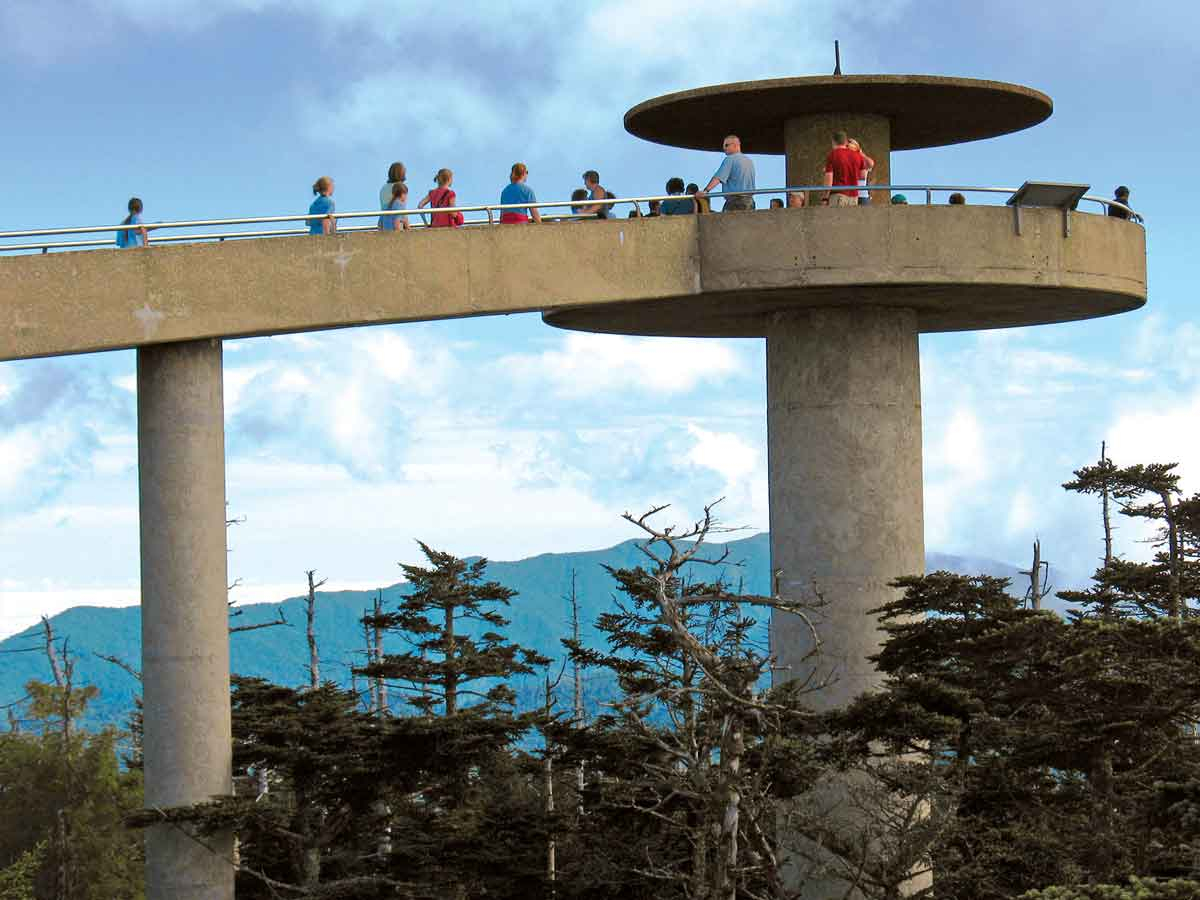Tribal Council to consider supporting Clingmans Dome name change
 With an iconic observation tower and sweeping views, Clingmans Dome is a popular destination within the Great Smoky Mountains National Park. NPS photo
With an iconic observation tower and sweeping views, Clingmans Dome is a popular destination within the Great Smoky Mountains National Park. NPS photo
During its July 14 meeting, the Cherokee Tribal Council will consider a resolution that calls for Clingmans Dome, the highest point in the Great Smoky Mountains National Park, to revert to its traditional Cherokee name of Kuwahi, which means “mulberry place.”
At 6,643 feet, Clingmans Dome is the park’s highest point and the third highest mountain east of the Mississippi, with a summit observation tower offering spectacular 360-degree views that on clear days can stretch past 100 miles. It’s a popular destination for the park’s millions of visitors and the starting point for the 1,175-mile Mountains-to-Sea Trail.
According to the resolution introduced by tribal members Mary Crowe and Lavita Hill, it’s also a sacred place to the Cherokee people, saddled with a name that pays homage to a racist figure in American history.
“The history of the renaming of Kuwahi to ‘Clingmans Dome’ shows that the name of Clingman was designated by a proponent of scientific racism (Guyot) on behalf of an avowed racist (Clingman), in an action that was disrespectful to Cherokee people, culture, history and tradition,” the resolution states.
According to the resolution, Kuwahi was a place of special significance to the Cherokee, visited by medicine people to pray and seek guidance from the Creator, referenced in oral teachings and stories, and used as a refuge by Cherokee seeking to evade removal during the Trail of Tears.
It was renamed Clingmans Dome following the 1859 surveying expedition of geographer and professor Arnold Guyot in reference to Thomas Clingman , who at the time was a U.S. Senator representing North Carolina. Not only did Clingman, who lived most of his adult life in Buncombe County, lack any substantial ties to the Cherokee people, he was an avowed racist who left the Senate in 1861 to fight for the Confederacy, rising to the rank of brigadier general. The resolution also refers to a manuscript that Guyot published titled “The Earth and Man: Lectures on Comparative Physical Geography in its Relation to the History of Mankind,” in which he “links continent locations, topography and climate to the superiority of certain races.”
Related Items
“The name Clingman is not derogatory in and of itself, but the history shows the act of changing the name of Kuwahi to Clingman’s Dome was racist and the racist action should be acknowledged and corrected,” the resolution states.
The resolution goes on to cite numerous examples of instances in which other mountains and landmarks named for Western figures have been rechristened with indigenous names or names that honor indigenous history. These include restoring the traditional name of Uluru to the Australian landmark previously called Ayers Rock and the U.S. government’s 2015 decision to adopt the indigenous name of Denali for the Alaskan mountain previously known as Mount McKinley.
Last month, the National Park Service announced that Mount Doane in Yellowstone National Park would now be called First Peoples Mountain to honor the many tribes with significant cultural and historical ties to the land. Gustavus Cheyney Doane, who the 10,656-foot mountain was previously named for, was the military general who led the 1870 massacre of a band of Piegan Blackfeet people.
As submitted, the resolution calls for an application to be prepared requesting that the U.S. Board on Geographic Names consider the name change. Tribal Council would have the opportunity to review and approve the application prior to its submission.
The resolution appears on Tribal Council’s July 14 agenda. Should the body approve it, it would go to Principal Chief Richard Sneed’s desk for a signature prior to becoming effective.













